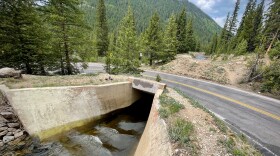Related Content
-
About 80% of Colorado鈥檚 water falls on the western side of the state. But about 80% of Colorado鈥檚 people live on the east side of the mountains. Because of gravity, that water doesn鈥檛 flow to them naturally. Instead, Colorado鈥檚 heavily-populated Front Range relies on a massive plumbing system to keep drinking water flowing to its taps.
-
In poll after poll, Americans make it clear: People working together is a good thing.Collaboration is a lofty goal touted by political and business鈥�
-
In an attempt to halt the construction of Chimney Hollow Reservoir outside Loveland, and the diversion of Western Slope water to the Front Range,鈥�


